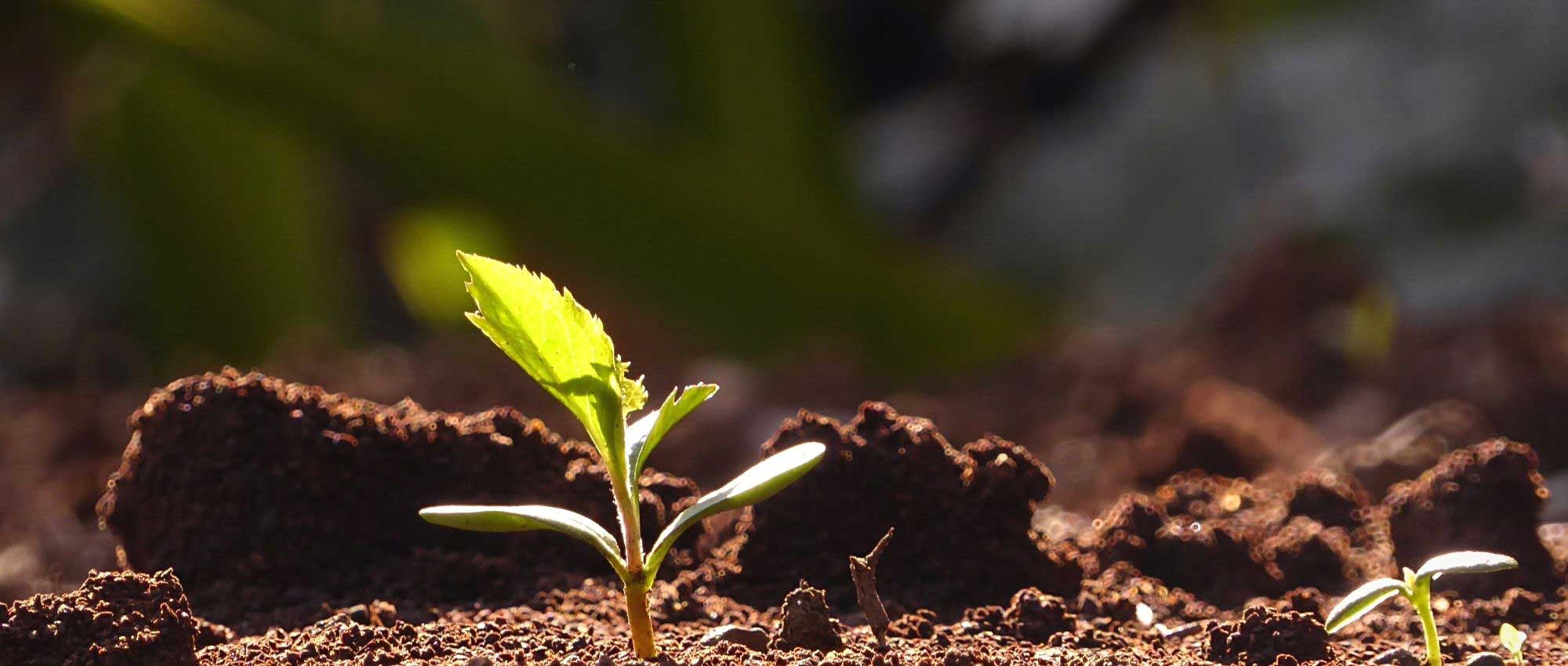
What is stratification?
What is it for and how do you do it? All our tips!
Contents
Stratification is a technique that allows breaking seed dormancy by imitating nature. In nature, plants often need to go through a cold period – winter – before they can germinate. Otherwise they would germinate in summer or autumn as soon as they reach soil, and young seedlings, still fragile, would then risk being killed by winter. Spring is much more favourable for young plants to develop. Seeds therefore wait to experience a cold period before germinating. Thus stratification aims to imitate nature to artificially break seed dormancy.
Discover which seeds require stratification, and our tips to succeed with this technique!
Stratification: what is it? What is it used for?
Seeds of certain plants need to undergo a period of cold before germinating, otherwise young plants would develop in autumn and be quickly killed by winter. This dormancy phenomenon is a protection developed by plants during evolution to ensure their survival and perpetuate the species.
Stratification breaks dormancy by altering the integument that surrounds seeds. This integument makes them impermeable to air and water. The technique is called stratification because seeds are usually placed in trays in alternate layers with sand: ‘in strata’. Cold stratification is also called ‘vernalisation’. It is generally carried out in January or February. To break dormancy, seeds must be exposed to cold AND humidity (as in nature during winter); cold alone is not enough. Seeds do not need to freeze; temperatures need not be negative, but simply cool, around 4 °C.
However, not all seeds require stratification, and some require warm stratification (generally at 20–25 °C).
For which types of seed?
Seeds requiring stratification are generally those from cold regions and that produce seeds in autumn!
Most fruit-tree seeds need stratification: cherry, plum, peach, apple, pear, walnut, hazel, chestnut…
This also applies to maples, kiwifruit, roses and hops.
Among perennials, this applies to gentians, astrances, columbines, aconites, eryngiums, scabious and burnets…
Tropical plants or even Mediterranean plants, which come from regions with a very mild climate, do not need cold stratification!
How to do it?
-
Refrigerator stratification
It is usually carried out in January or February so seeds are ready to sow in early spring.
- Fill a seed tray with sieved sand (or a mix of sand and turf in equal proportions) and moisten slightly.
- Place seeds, spacing them so they do not touch.
- Cover with a layer of slightly moist sand.
- You can create several strata (hence name stratification) by repeating operation: lay about 3 cm of sand, add seeds, add 3 cm of sand, add another layer of seeds, etc.
- Place tray in a sealed plastic bag (for example a freezer bag) to retain moisture.
- Then place tray in refrigerator. Depending on species, stratification lasts at least several weeks, and may extend to 2–3 months.
- Check seed condition weekly, as some may begin to germinate in refrigerator (remove these and sow them). Also check for any signs of mould.
- In early spring, remove tray from refrigerator, then sieve substrate to recover seeds. Then sow seeds!
Instead of using a tray and sand, you can place seeds in small plastic bags with a sheet of absorbent paper that has been moistened slightly (or with moist vermiculite). This takes much less fridge space and allows storing a larger number of different species. Also, once stratification is finished, it is much easier to find small seeds in bags than having to search for them in sand!
For cold stratification, temperature should be about 4 °C. Duration varies between a few weeks and 3–4 months. If in doubt, stratify for two and a half to three months, as this most closely mimics natural conditions of a real winter… Stratifying seeds longer than necessary does not cause a problem.
-
Outdoor stratification
You can also stratify seeds simply by sowing them in a pot in autumn and placing it outdoors against a north-facing wall for winter.
This method is mainly used for large seeds, notably fruit trees with stones or pips:
- Take a pot and add a layer of slightly moist sand.
- Then place seeds.
- Cover with sand. Optionally repeat alternated layers of seeds and sand.
- Place pot outdoors against a north-facing wall.
- Cover tray with wire mesh to protect seeds from rodents and other animals.
Drawback of outdoor stratification is seeds are more exposed to birds, rodents, insects, etc., which can disturb substrate and eat seeds. To protect them, place pots or trays off the ground, for example on a table, and fit fine wire mesh on top to stop birds and rodents from scratching substrate.
Another technique to break dormancy is scarification. Damage integument by rubbing seeds on sandpaper. This makes seed permeable to water and air and helps trigger germination. Finally, some seeds, notably those of Proteaceae (Callistemon, Protea…), need treatment by fire! (In nature their seeds germinate after a fire.) These are pyrophytic plants.
- Subscribe!
- Contents
































Comments